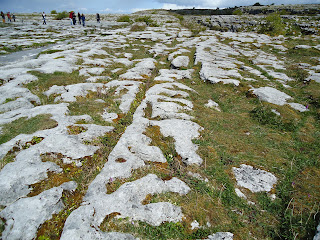The Burrens had the best example of Ireland's Rendzina soils. The exposed limestone stretched on for what seemed like miles. There was ivy, orchids, and other natural flora all over the rocks. The plants grow in pits from erosion from wind or water.
Here is a close up on a "pit" or groove into the rock with moved soil inside. The soil inside creates basically a pot for the plants to grow.
Even though it was from 1962, it was still very interesting to look at.

Though the soil was not red like Tara from Gone with the Wind, the beauty of the landscape is second to none. Even if you aren't interested in soil, the topography and landscapes of the island are so worth the trip.




